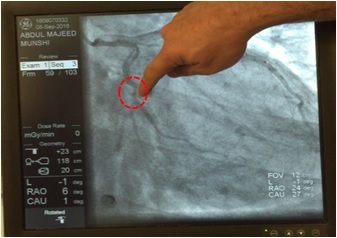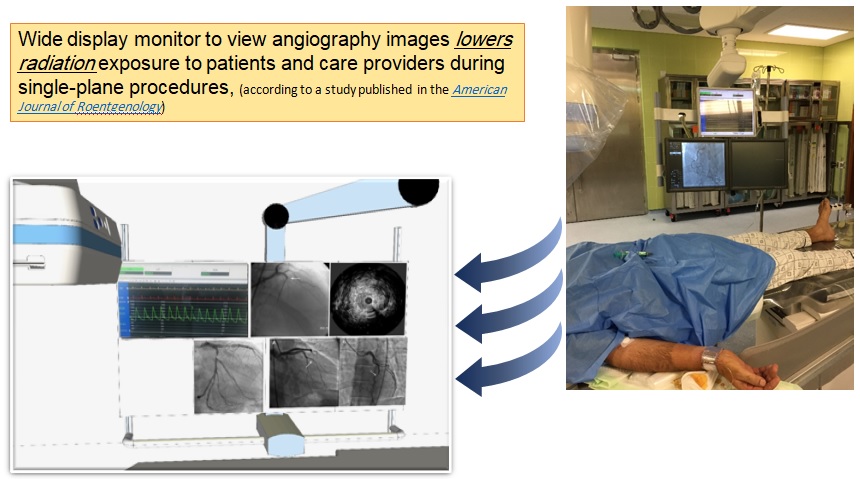Hemodynamic monitoring And Image monitors
Sets of display Monitors used in cath lab
Hemodynamic monitoring And Image monitors
- Hemodynamic monitoring:
- Continuous monitoring of the movement of blood and the pressures being exerted in the veins, arteries, and chambers of the heart.
- The main goal is the critically ill patient remains the correct assessment of the cardiovascular system and its response to tissue oxygen demands.
- It plays an important role in the cath lab. (It works hand-in-hand with other modalities such as fluoroscopic machine)
- When considering the hemodynamic system, also consider if the procedures to be performed in the cath lab includes electrophysiology (EP) studies, since additional software and equipment will be required and may require interfacing or additions to the system’s current software.
- Imaging monitors:
- Represent images that are taking during procedures (and able to see more than 2 images simultaneously).
- Connect other imaging technique images (OCT, IVUS) to this monitor to have the whole view.
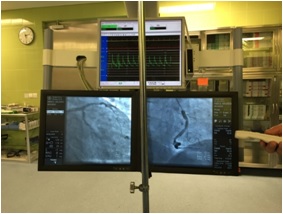
Parameters of hemodynamic monitors:
- ECG (12 lead): the basic four electrodes can provide enough information for ECG monitoring during coronary angiography (2-3 lead)
- Spo2
- IBP and NIBP
- Cardiac Output(CO) and HR
- Temperature
- Respiration monitoring by Capnography (Without concurrent observation of respiration, oxygen saturation monitoring will not detect respiratory depression because it measures oxygenation not Ventilation)
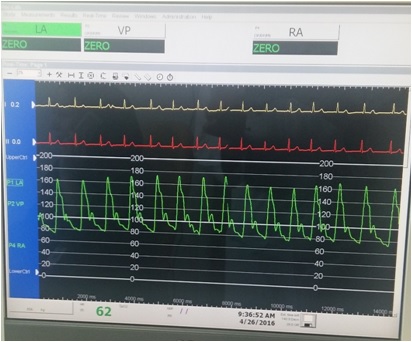
Some example of imaging
A blocked coronary artery from two view
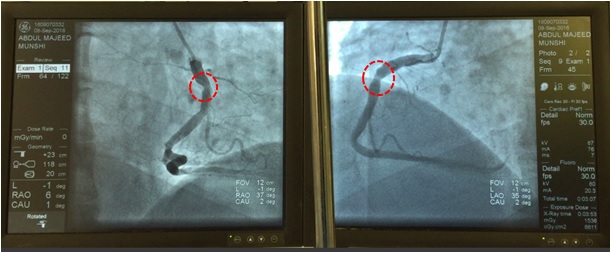
A narrowed coronary artery
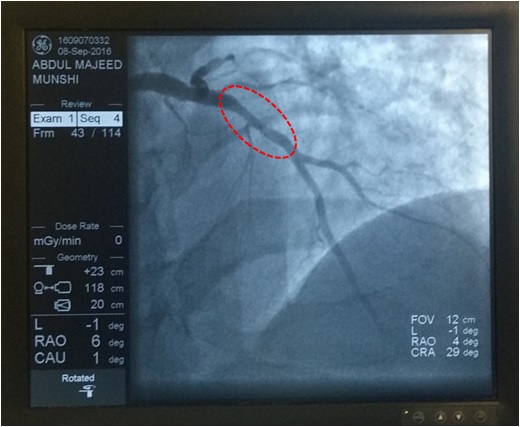
A 80%-90% blockage in coronary artery
